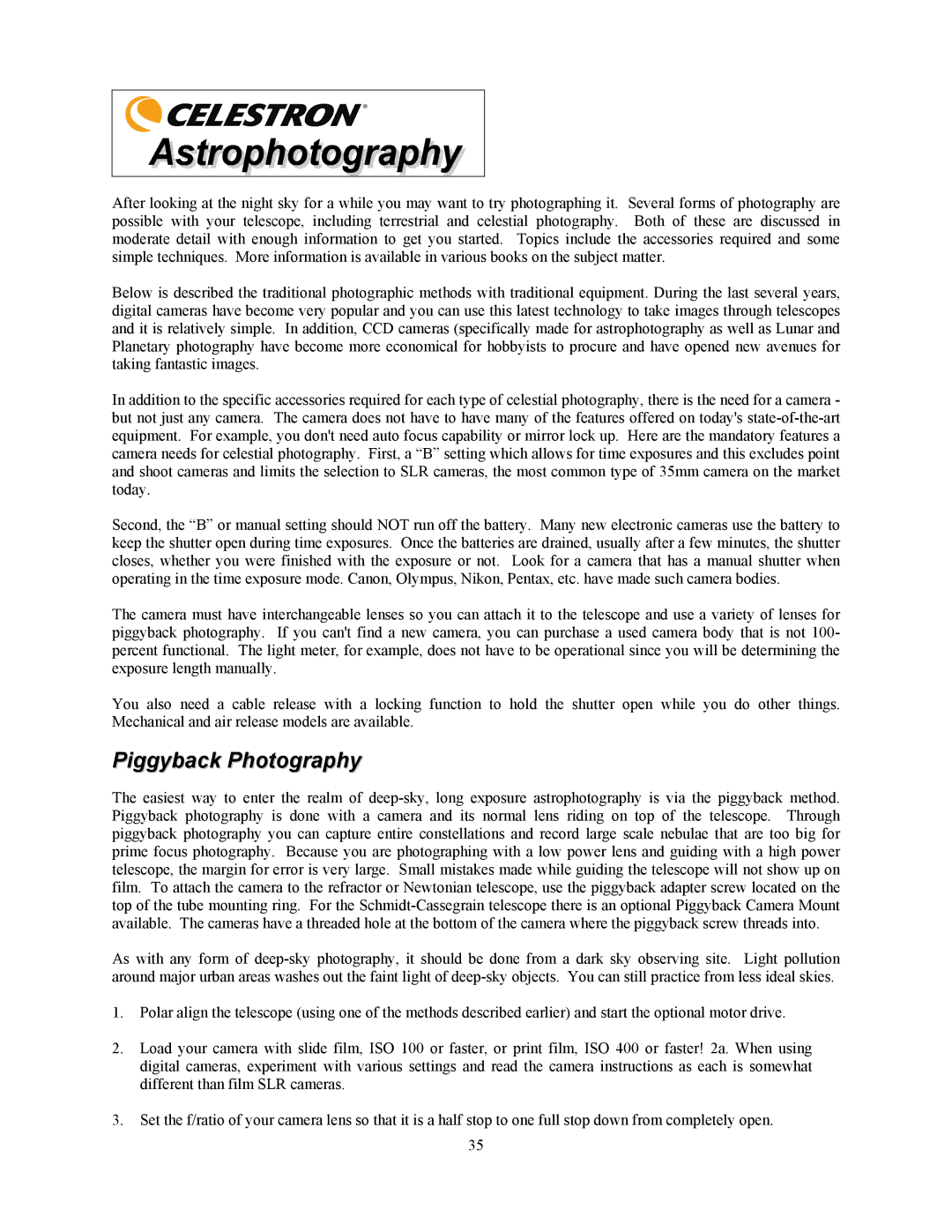
After looking at the night sky for a while you may want to try photographing it. Several forms of photography are possible with your telescope, including terrestrial and celestial photography. Both of these are discussed in moderate detail with enough information to get you started. Topics include the accessories required and some simple techniques. More information is available in various books on the subject matter.
Below is described the traditional photographic methods with traditional equipment. During the last several years, digital cameras have become very popular and you can use this latest technology to take images through telescopes and it is relatively simple. In addition, CCD cameras (specifically made for astrophotography as well as Lunar and Planetary photography have become more economical for hobbyists to procure and have opened new avenues for taking fantastic images.
In addition to the specific accessories required for each type of celestial photography, there is the need for a camera - but not just any camera. The camera does not have to have many of the features offered on today's
Second, the “B” or manual setting should NOT run off the battery. Many new electronic cameras use the battery to keep the shutter open during time exposures. Once the batteries are drained, usually after a few minutes, the shutter closes, whether you were finished with the exposure or not. Look for a camera that has a manual shutter when operating in the time exposure mode. Canon, Olympus, Nikon, Pentax, etc. have made such camera bodies.
The camera must have interchangeable lenses so you can attach it to the telescope and use a variety of lenses for piggyback photography. If you can't find a new camera, you can purchase a used camera body that is not 100- percent functional. The light meter, for example, does not have to be operational since you will be determining the exposure length manually.
You also need a cable release with a locking function to hold the shutter open while you do other things. Mechanical and air release models are available.
Piggyback Photography
The easiest way to enter the realm of
As with any form of
1.Polar align the telescope (using one of the methods described earlier) and start the optional motor drive.
2.Load your camera with slide film, ISO 100 or faster, or print film, ISO 400 or faster! 2a. When using digital cameras, experiment with various settings and read the camera instructions as each is somewhat different than film SLR cameras.
3.Set the f/ratio of your camera lens so that it is a half stop to one full stop down from completely open.
35
